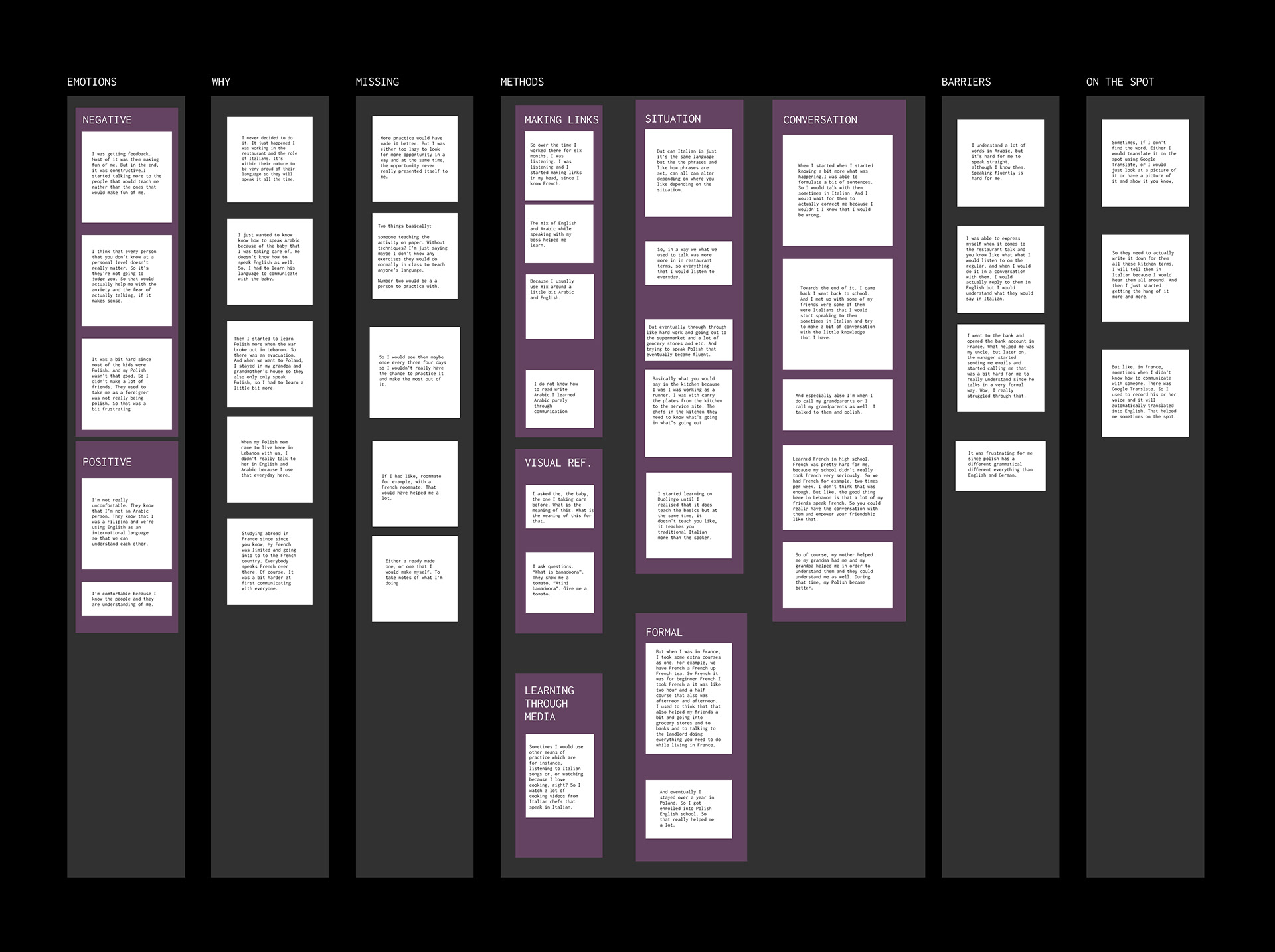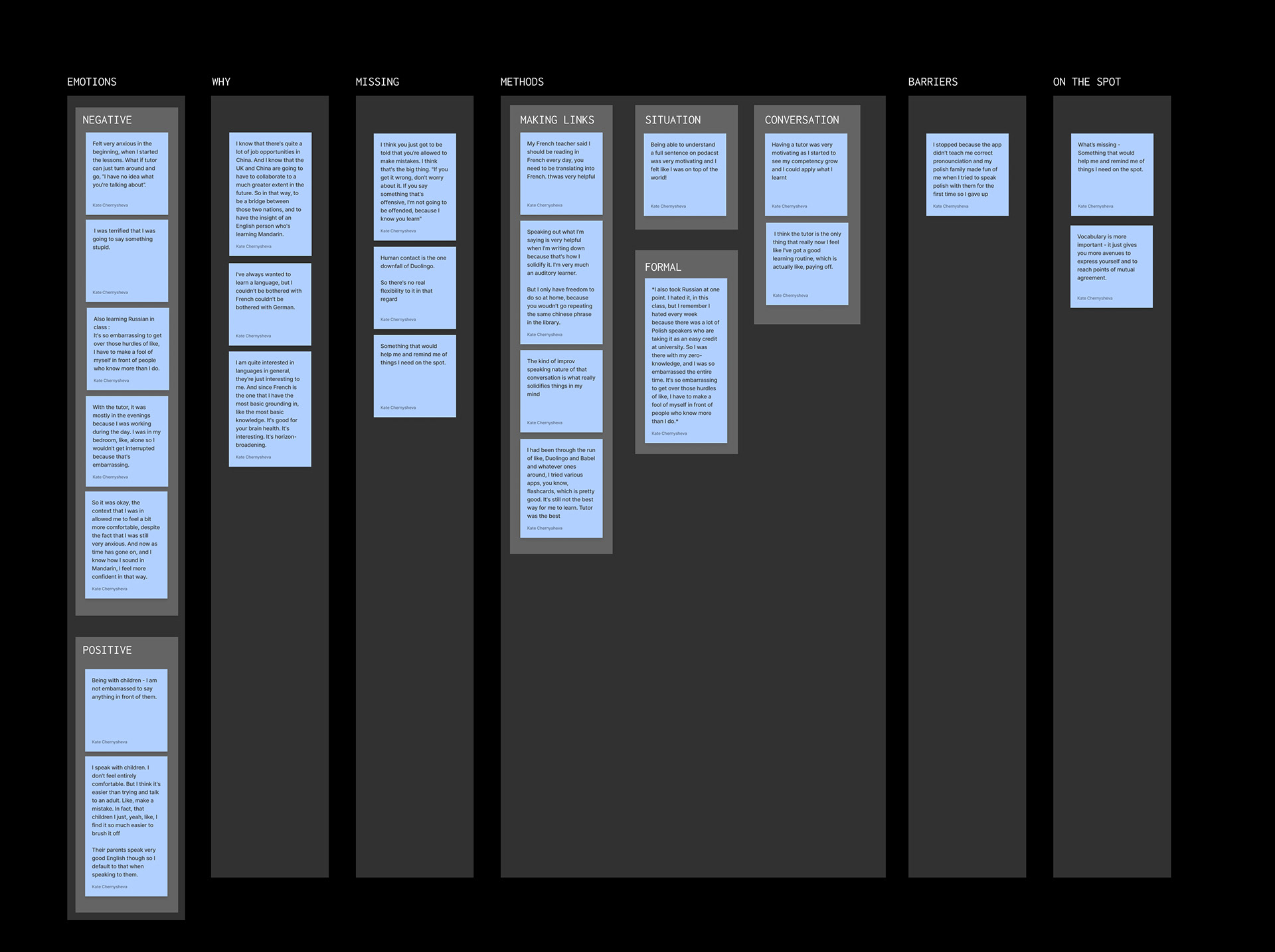November 2021
Group: Tatiana Bohsali, Maria Shuttleworth
Group: Tatiana Bohsali, Maria Shuttleworth
Upon finishing our language learning channels testing we wanted to get more information about people's experiences by asking more specific questions. While we tried to start designing and prototyping ideas for our project, we also simultaneously began conducting directed storytellings with different people who are either learning a language or have tried to in the past. It helped us gather detailed and comprehensive stories about participants’ personal experiences with language learning (Martin and Hanington, 2012). We contacted everyone who has ever had the experience of using different learning channels and methods. To guide the participants in their story, the discussion always began with a prompt "tell me about the last time you started trying to learn a new language?". This was followed by the a set of questions that aimed to guide participants in their story:

List of prompts and question we wrote down to ask the participants. Created by all of us.
We managed to speak to 11 people. It felt great to hear their stories and I could relate to a lot of things people struggled with in their process as well as what they found most rewarding.

Screenshot of one of the directed storytellings I conducted via Google Meet. Screenshot by me.
SYNTHESIS

Upon completing the directed storytelling sessions, we organised the data we gathered into a set of statements representing the key findings based on the stories participants had told us.



Tables we each created categorising the key statements said by the participants. Created by Tatiana, Maria and I respectively.
We noticed 3 commonalities among the stories we gathered. Firstly, all of the participants expressed their need to be able to personalise their learning journey and be able to keep track of it. Such as having something like a personal diary to come back to in order to quickly retrieve things they saved, preferably something that would also help them on the spot. Secondly, most of the learners highlighted the need of the more knowledgeable other - someone they could practice with in a comfortable environment. However, this was also said mentioning the emotional struggle (e.g. anxiety when speaking the target language) which later on inspired my essay where I explored the emotions and design's impact on it. This was also closely linked to the cultural aspect and having the person you practice with relate to you. Last but not least, the need for visuals. Similarly to our findings from the survey, people expressed the importance of having images, videos and audio to aid their learning process.
Conclusion
Overall, we saw that the process of language learning is never the same for everybody. It is messy and depends on the individual and there is no unique formula to successfully learn a new language. We interviewed a variety of people: from those who are extremely dedicated to those who learn it casually to rewind at the end of the day. However, it, unfortunately, didn't help us to narrow our focus down as there were so many different aspects highlighted that we wanted to pay attention to. Although we were asking specific questions, it gave us so much data we simply struggled to choose one thing to focus on. We felt like there was a lot and we really needed to make some decisions and START MAKING. Nevertheless, these stories really helped us later down the line, when we were creating our final outcome...
BIBLIOGRAPHY
Martin, B. and Hanington, B., 2012. Universal methods of design. Beverly, Massachusetts: Rockport Publishers.